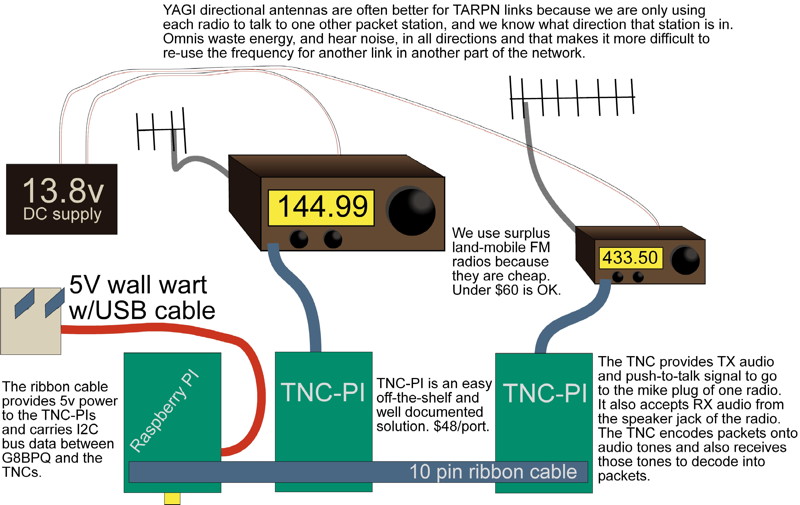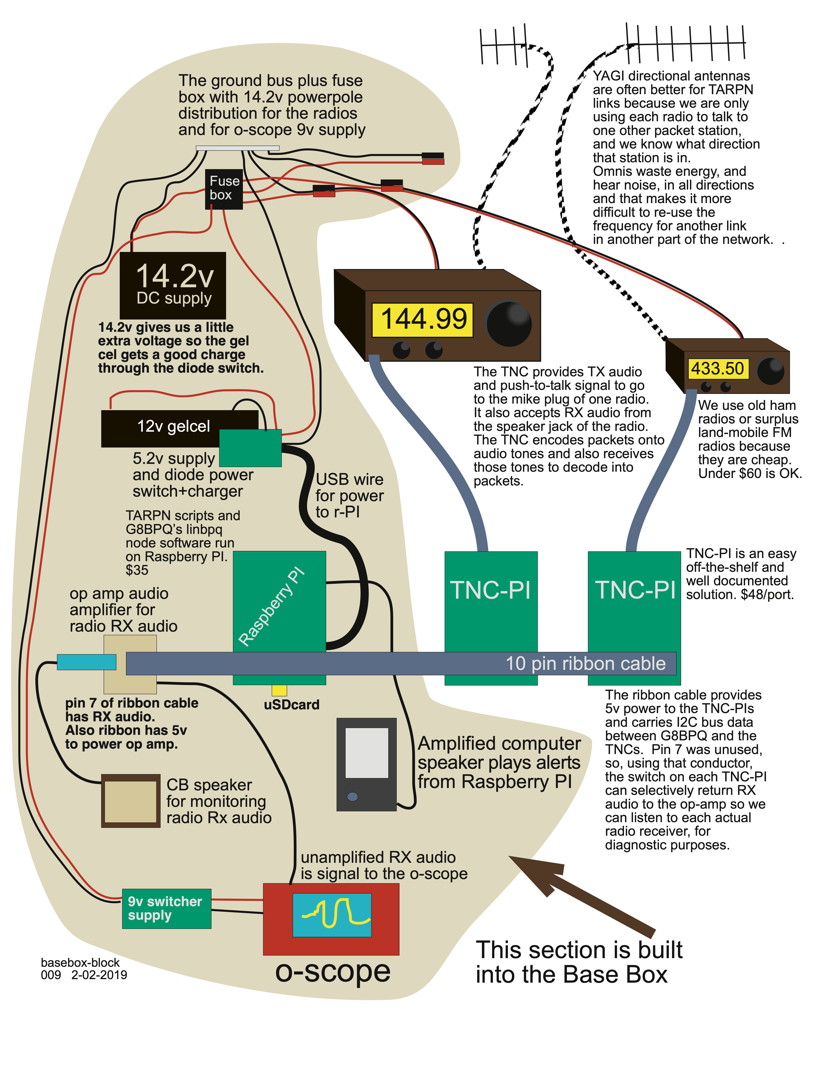| home | FAQs | Search |
An important point is that the Raspberry PI TARPN architecture is expandable. You can start with one port, and add more later if the need arises.
The drawing below represents a three port node, with three sets of TNC + radio + feedline + antenna. The drawing also shows only mobile radios and on 3 separate ham bands. It shows the TNCs connected using Insulation Displacement Connectors and ribbon cable to the Raspberry PI. These TNCs are TNC-PI and are available from Coastal Chipworks for $40 each. The Raspberry PI and memory card cost about $50 from Amazon or other vendors. See Node Shopping List.
See Networking on Purpose for the why of dedicated links.
Each link runs asynchronous to each other link and so you could have inbound traffic on one link while transmitting a message on another. While it is possible to receive on a radio while transmitting on another on the same band without blocking the receiving radio, it is much easier to do that when on different bands. It may seem difficult or complex to do multiple bands. However, it is easier to do multiple bands than to do two radios on the same band.
|
|

|

|
The antennas shown include a separate antenna for each radio. You could use a multi-band vertical. Some stations are close enough together that very trivial antennas will perform. However, the hardest part of building a TARPN, so far, has been distance and antennas.
The only required part of the node is that it uses a Raspberry PI. We actually have a well described and specific set of rules for participation. (see Rules for TARPNS) Everything else is dependent on the situation the node/switch is being built for.
Please visit our FAQS page for more background info. If you can't find what you are looking for, we may not have thought of the question you are asking. I would really appreciate an email advising me of the mistake. I'll pass it around to the appropriate party and find out an answer. Send me an email at the address shown on my QRZ.com page. When I get an answer I'll either pass it on to you, or publish it on the web page and tell you about it. Thanks.